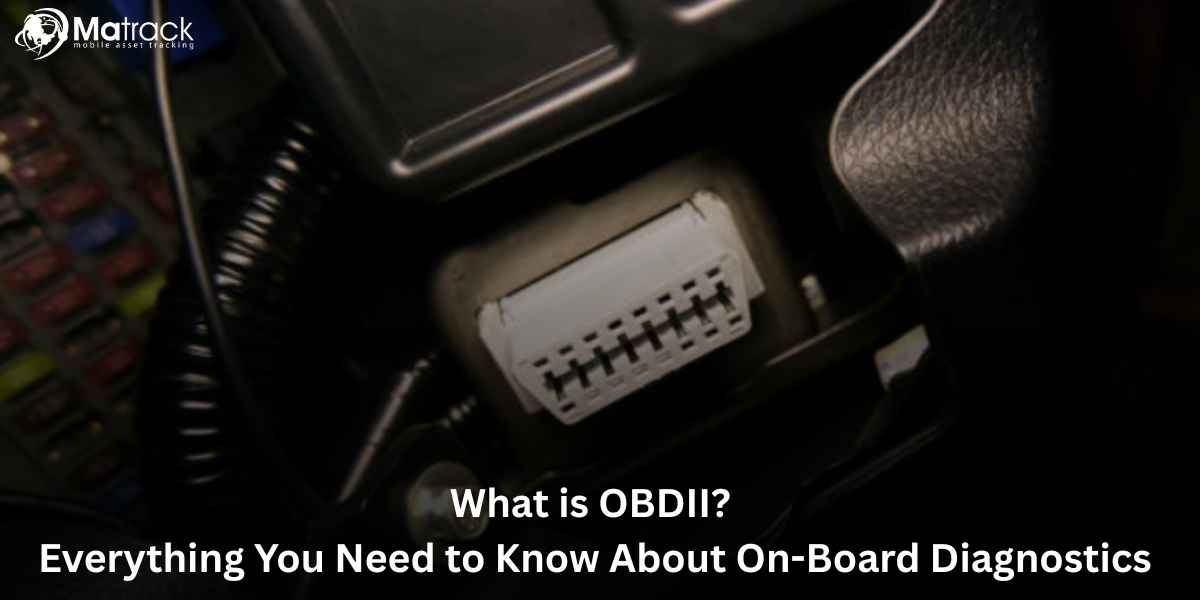Key Takeaways:
- Driver Monitoring Systems improve road safety by detecting distraction, fatigue, or risky behavior as it happens.
- These systems rely on cameras, sensors, and AI to monitor eye movements, head position, and physical signals linked to inattention.
- The technology helps reduce accidents by issuing alerts or stepping in when needed, while supporting legal compliance and fleet safety.
- Solutions like Matrack’s fleet dash cam provide full driver visibility, instant warnings, and on-demand video access to strengthen accountability.
What Does a Driver Monitoring System Mean?
Driver Monitoring System is a vehicle safety feature that uses cameras and sensors to detect signs of distraction, fatigue, or inattention. This technology increases driving safety because it provides warnings or takes action when dangerous behavior occurs.
By analyzing eye movements, head position, and facial expressions, the system ensures the driver stays focused on the road. It processes this data in real time, helping prevent accidents caused by human error.
Why Is Driver Monitoring Important?
Driver monitoring matters because it helps reduce crashes linked to distraction or fatigue. The system plays a key role in keeping drivers alert and focused during every trip.
By spotting early signs of inattention, this technology gives drivers more time to react. That extra moment can make the difference between a near-miss and a serious accident.
As vehicles offer more automation, driver monitoring keeps people engaged behind the wheel. It provides an added layer of safety when advanced features handle part of the driving task.
How Does A Driver Monitoring System Work?
A Driver Monitoring System works by observing the driver’s behavior through cameras, sensors, and artificial intelligence. The system collects and analyzes information to spot signs of distraction, drowsiness, or inattention.
It gathers data on eye movements to check if the driver is looking at the road. Head position is tracked to see if the driver is turning away for too long. Facial expressions, like yawning or drooping eyelids, are monitored as indicators of fatigue. Blink rate is measured because unusual blinking patterns often signal tiredness.
This information is processed by advanced algorithms in real time. When the system detects risky behavior, it issues warnings through sounds, dashboard signals, or seat vibrations. In some vehicles, the system can step in by applying emergency braking or helping keep the car in its lane.
What Are The Key Components of a Driver Monitoring System?
A Driver Monitoring System combines several key components that work as one to keep the driver safe. Each part serves a specific purpose in spotting distraction or fatigue during the journey.
Infrared Cameras
These cameras provide a clear view of the driver’s face, even in poor lighting or at night. Their position on the dashboard or steering column helps them stay focused on the driver without getting in the way.
Eye-Tracking Sensors
Eye-tracking sensors follow where the driver is looking. They help the system figure out if attention is on the road or wandering somewhere else.
Head Position Sensors
These sensors check the angle and direction of the driver’s head. When the head turns away for too long, it signals that focus might be lost.
Processing Unit
The processing unit pulls together data from the cameras and sensors. It uses smart algorithms to spot warning signs in real time.
Alert System
This part of the system warns the driver when it spots unsafe behavior. Depending on the car, it can give audio signals, vibrations, or even step in with braking or lane-keeping help.
Types of Driver Monitoring Systems
Driver Monitoring Systems fall into three main types, based on the kind of risk they aim to catch. Each one targets a specific problem linked to unsafe driving.
Distraction Detection Systems
Distraction Detection systems help spot when the driver’s attention shifts away from the road for too long. They’re designed to notice things like looking at a phone or turning to talk to a passenger.
Drowsiness Detection Systems
Drowsiness Detection systems focus on picking up the early signs of fatigue. By watching for slow blinking or long eye closures, they can warn the driver before drowsiness becomes dangerous.
Biometric Monitoring Systems
Biometric Monitoring systems track physical signals that point to stress or tiredness. They collect data like heart rate or skin response, often through sensors in the seat or linked wearable devices.
Benefits and Challenges of a Driver Monitoring System
| Benefits | Challenges |
| Reduces crash risk by detecting inattention early. | Raises privacy concerns due to continuous driver monitoring. |
| Helps vehicles meet legal safety standards. | Increases production cost because of added hardware and software. |
| Improves safety for commercial fleets. | May trigger false alerts that frustrate drivers. |
| Lowers insurance costs by reducing accident risk. | |
| Supports drivers without adding distraction. |
Driver Monitoring System Regulations
In the United States, Driver Monitoring Systems play a growing role in vehicle safety guidelines. The National Transportation Safety Board (NTSB) recommends these systems for cars that use driver assistance features to help prevent crashes caused by distraction or fatigue.
Right now, no federal law makes Driver Monitoring Systems mandatory across all vehicles. However, safety agencies and industry groups continue to call for stronger rules that would require these systems, especially in cars with advanced technologies like adaptive cruise control or lane keeping.
How Matrack Fleet Dash Cam Helps You In Monitoring Drivers?
Matrack’s fleet dash cam helps you monitor drivers by providing real-time video access from up to five cameras placed around the vehicle. This setup gives you a full view of driver behavior, including actions inside the cab and events on the road.
The system alerts drivers instantly when it detects risky behaviors like distraction, drowsiness, or smoking. These audible warnings promote safer habits and reduce the chance of accidents across your fleet.
You can review video footage on demand through the Matrack web portal to evaluate driver performance after incidents. This feature makes it easier to address safety concerns, resolve disputes, and improve accountability.



